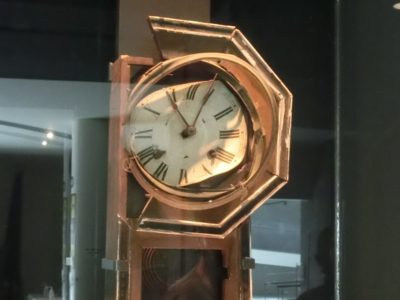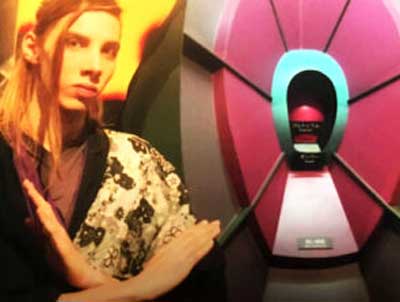In Nagasaki, Japan, very close to where the epicenter of the explosion of the atomic bomb was, is the Atomic Bomb Museum. What happened on August 6 and 9, 1945 should never be repeated, and this museum explains in detail why.
Clock Paralyzed in Time
Upon entering the museum, there is a spiral corridor that makes you think that you are going back in time. You get transported from our time to 1945. The first thing you will see is a clock paralyzed in time, forever stuck at 11.02. This is the exact time the bomb exploded. In the first part of the museum, you can see a replica of how Nagasaki looked just after the explosion. This way, the visitor can experience firsthand the impact and destruction of the bomb. It is very impressive.
In the next room, objects that were left after the explosion are on display such as melted bottles and burned clothes. Even more poignant are the bones of a human hand glued to a melted glass, and a lunchbox with its still charred content. The helmet with the remains of the skull of a victim on the inner surface really makes the terror tangible. The following section shows the damage caused by the radiation and the damage caused by the explosion. You can also see appeals of the atomic bomb survivors and the rescue and relief activities that were carried out.
There is also a high-tech demonstration that shows in a 3D model of the city how the bomb’s wave destroyed everything from the epicenter to the outskirts of the city. Touring the museum, you will also find many religious symbols such as rosaries that due to the strong heat melted. This museum contains explicit images of the victims after the bombing and a real-size replica of ‘Fat Man’, the name of the atomic bomb that was dropped in Nagasaki, is on display.


Reflecting on Peace
The penultimate section is dedicated to how the first bombs were created and why it was decided to drop them in Japan, from the decision that was taken in the Manhattan Project until August 9 when the second and last atomic bomb was dropped.
Finally, the museum leaves us in the last room with a chance for reflection on peace. Here you can see how nuclear weapons have evolved since the bombing of Nagasaki and it shows how many nuclear weapons each country has. The museum hopes to make clear that the atrocity generated by these weapons can be repeated if human beings do not react and prohibit nuclear weapons.
The museum promotes a pacifist philosophy and prays that this tragedy does not happen again, but to protect the future you have to know what happened in the past. This museum was founded in 1966 and remodeled to the establishment that is today in 1996.
Nagasaki National Peace Memorial Hall
A few meters from the museum, you can find the Nagasaki National Peace Memorial Hall for the Atomic Bomb Victims. 12 pillars of light make up the monument, along with photographs of the victims. At the top, there is a beautiful water basin bordered by trees through which the 12 pillars of light continue to rise from below. At night, 70,000 fiber optic lights illuminate the surface of the water, symbolizing the victims. Nagasaki today is considered a city of peace.
Your Japan Tour
As seasoned Japan experts, we create perfect Japan package tours including destinations like Nagasaki. Check out our group tours and private tours, or contact us to start planning your unforgettable holiday to this fascinating country. Japan is full of once-in-a-lifetime experiences, culture, history, nature, and delicious food!
Atomic Bomb Museum Access Information
Access
From Genbaku-Shiryokan tram station or Hamaguchi-cho bus stop
Entrance fee
Adults 200 yen, Under high school students 100 yen
Hours
May to August: From 8.30 am to 6.30 pm (last entry 6 pm)
September to April: From 8.30 am to 5.30 om (last entry 5 pm)